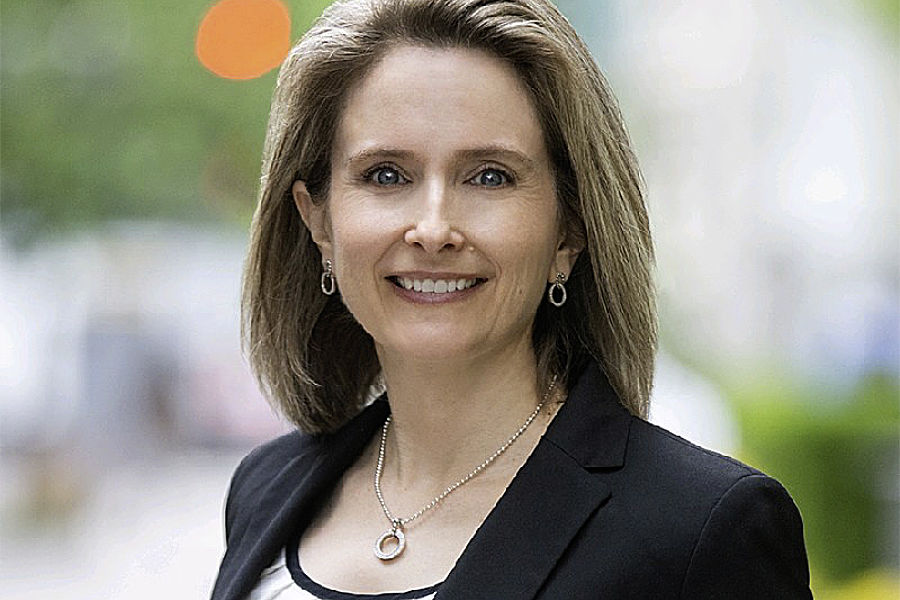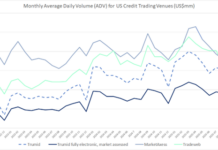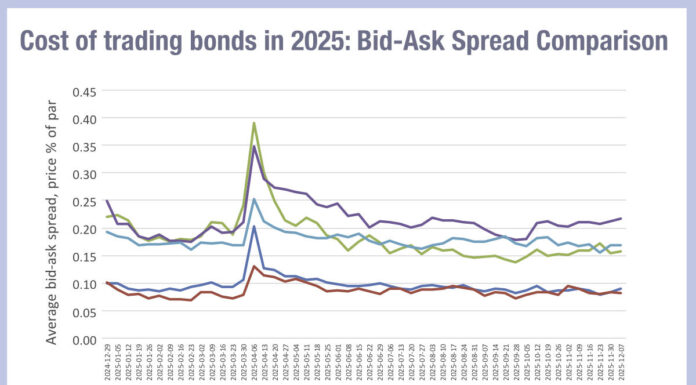 The removal of key legislative proposals in the US capital markets is potentially allowing electronic trading platforms to develop entirely new ways of trading outside of a regulatory framework.
The removal of key legislative proposals in the US capital markets is potentially allowing electronic trading platforms to develop entirely new ways of trading outside of a regulatory framework.
In September 2021, the Commodity and Futures Trading Commission (CFTC) fined Symphony Communications $100,000 failing to register as a swap execution facility and to cease the use of its automated request for quote (RFQ) workflow for swaps, called SPARC. This tool let multiple swap market participants select swap product parameters, such as type, clearing, tenor, and notional to populate the RFQs.
“Those RFQs could be sent to multiple swap market participants,” the CFTC noted in its judgement. “SPARC Tool then permitted swap market participants that received the RFQs to negotiate prices that could be acknowledged or confirmed using the command ‘done.’”
While Symphony actively helped the investigation and willingly shut down SPARC, the case drew a line in the sand for technology providers, on the understanding that they would need to register as a trading venue if they enabled certain trading functions in the swaps market.
The CFTC simultaneously issued a ‘Staff Advisory on Swap Execution Facility Registration Requirement’ in September 2021, to clarify when SEF registration requirement applied to entities that facilitate trading or execution of swaps through one-to-many or bilateral communications; facilitating trading or execution of swaps that are not subject to the trade execution requirement in the CEA; provide non-electronic means for the execution of swaps; or fall within the SEF definition operated by a commodity trading advisor (CTA) or an introducing broker.

US authorities have now thrown this out of the window. In March 2025, the CFTC withdrew this advisory, on the basis that “SEF Registration Advisory has created regulatory uncertainty regarding whether certain entities that operate in the swaps market are required to register as SEFs with respect to their particular functions within the swaps market, as well as the specific attributes of their business models,” according to a letter signed by Amanda Olear, acting director of the Division of Market Oversight (DMO).
In June 2025, following the Executive Order that placed the DMO under direct control of the US president, the US Securities and Exchange Commission (SEC) followed suit. It decided to drop proposed amendments made in March 2022 to rule 3b-16 under the Exchange Act, which defines certain terms used in the statutory definition of ‘exchange’ under section 3(a)(1) of the Exchange Act to include systems that offer the use of non-firm trading interest and communication protocols to bring together buyers and sellers of securities, while proposing amendments to the Commission’s regulations relating to alternative trading systems (ATSs), including regulations for ATSs that trade or repo government securities.
Collectively these proposals were intended to clearly define whether trading systems were assisting a buy- or sell-side firm trade, or were functioning as markets themselves. This was most notably a concern for execution management system (EMS) providers in over-the-counter (OTC) markets. OTC trading is bilateral in nature and any aggregator of liquidity or pricing potentially looked like a venue to the regulators.
Not only does this potentially reduce the regulatory burden on trading system providers, it takes the US on a different approach to Europe.
The Atlantic gap
In Europe, the ‘trading venue perimeter’ has been framed in regulation since February 2023 when the European Securities and Markets Authority published a report on the topic, providing guidance on when certain systems and facilities qualify as ‘multilateral’ and therefore should seek authorisation as a trading venue.
It effectively said that if a third party provider makes decisions about trading rules within a system and the level of automation they are. However, it has also said that a case-by-case judgement may be needed.
The potential regulation of trading desk technology such as EMSs was the biggest worry for buy-side firms who use them to manage electronic trading.
ESMA said that, based on feedback from the market, “[It did not intend to capture systems] which provide pure connectivity services between investment firms and execution venues. In general, EMSs employ software or technical tools aimed at facilitating order execution by offering an overview of liquidity and prices on various venues, subsequently sending the orders to the preferred trading venue or trading venues for execution. Therefore, an EMS which purely supports routing orders without a third-party prescribing the rules for this interaction, should not be considered as a multilateral system and would hence not be required to seek authorisation as a trading venue.”
The caveat to this is that systems which “present additional features and level of complexity that allow for the interaction of multiple third party buying and selling interests in financial instruments, thus combining all four criteria identifying a multilateral system, should be required to seek an authorisation as a trading venue.”
In the UK similar clarification was published by the Financial Conduct Authority (FCA) distinguishing between general purpose communications systems and multilateral systems, and setting out a range of factors to be considered as to whether a service has the characteristics of a trading system and exempting voice trading systems unless they have the characteristics of a venue.
This did not draw a clear line between EMSs and trading venues, but established a situation in which most trading system providers have accepted they either have to remove functionality to avoid regulation, or register as a venue in Europe.
“With the recent focus from many market participants [on connectivity costs], this will become only more burdensome as EMS and order management system (OMS) providers have additional costs to bear,” noted one source.
What this may mean for traders
If Europe regulates trading systems more firmly as venues, and the US has opened up its rules on trading venues, that may make a material difference to the flexibility trading system providers have in the US markets versus European markets.
Whether this might have a positive or negative impact on either market will be borne out over time. However, there is now a clear gap in the level of regulation of trading systems between markets and this may change the way traders can engage with and innovate in markets.
©Markets Media Europe 2025















